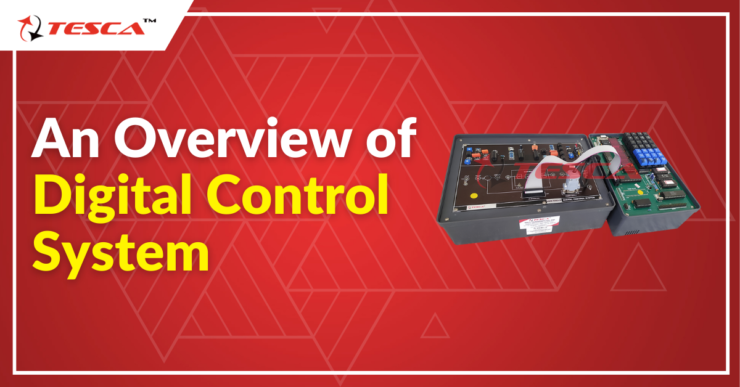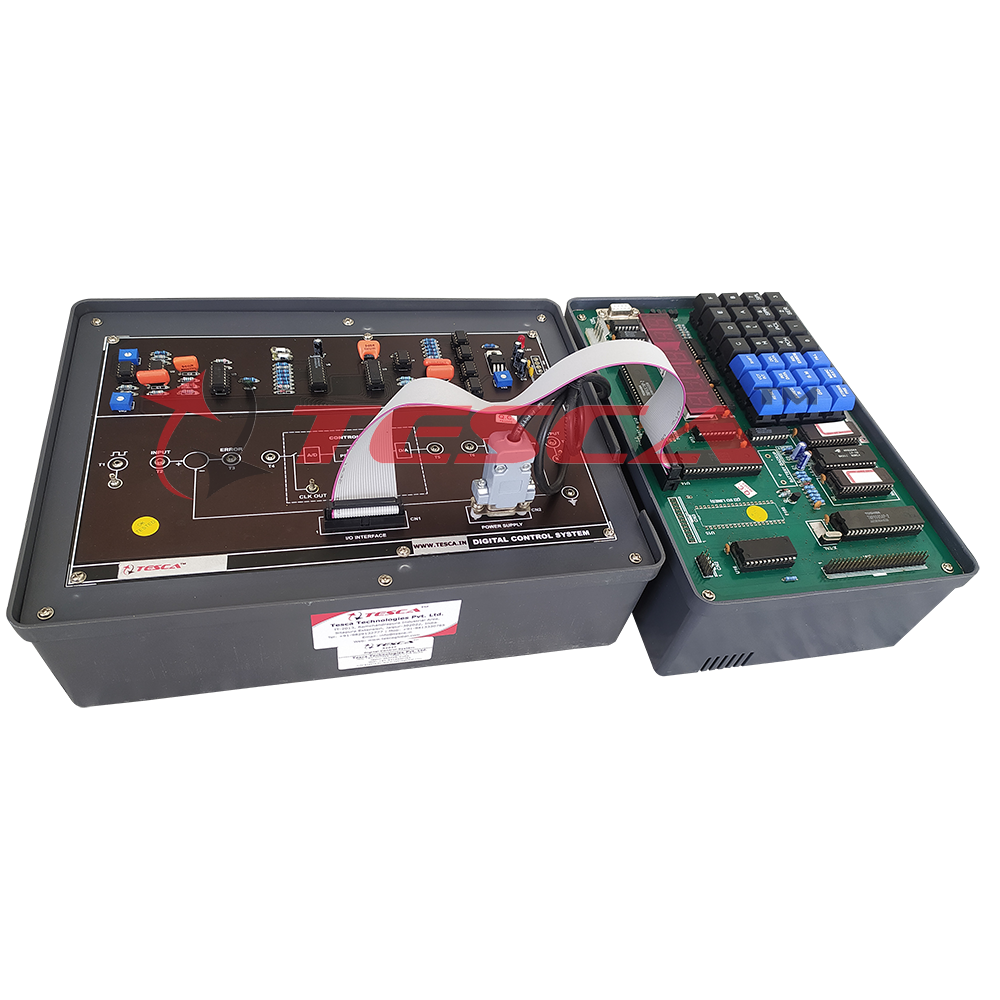Table of Contents
Digital control system– A way to interact with machines and devices, providing unprecedented precision, efficiency, and accuracy. From a room’s temperature to an airline’s flight control, these systems can control all digitally active things around us. So, let’s learn what a digital control system exactly is and how it works.
Digital control technology is the future of automation! By utilizing digital signals, we can effortlessly regulate physical processes and devices with precision and efficiency previously unseen. It involves taking measurements like temperature, pressure, and velocity to adjust system behaviour in real time, all thanks to mathematical algorithms and calculations.
All about Digital Control System
This cutting-edge technology requires an expert combination of hardware and software, including sensors, processors, actuators, and control logic. But fear not! In this blog, we’ll keep you informed about the latest trends and developments in digital control technology, whether you’re a seasoned engineer or simply curious. So why wait? Join us on this journey and stay ahead of the curve!
What is a Digital Control System Trainer Board?
A digital control system trainer board is a sophisticated educational tool that provides hands-on training and practical experience in digital control systems. Students and professionals in engineering and related fields typically use these trainer boards to learn about digital control systems, develop new control algorithms, and test their designs in a safe and controlled environment.
A digital control system trainer board typically comprises a hardware platform with various components. It includes microcontrollers, digital signal processors (DSPs), analogue-to-digital converters (ADCs), and digital-to-analogue converters (DACs), as well as various input/output (I/O) devices like switches, LEDs, and sensors. Students and professionals can program and test control algorithms using multiple programming languages and software tools.
Besides, they are essential tools for teaching and learning about digital control systems in robotics, process control, power electronics, and aerospace engineering applications. With the increasing complexity and sophistication of modern control systems, it is becoming increasingly important for engineers and technicians to have a deep understanding of digital control systems and the ability to design, implement, and test new control algorithms.
In addition to providing hands-on training in digital control systems, trainer boards can also be used for research and development purposes, allowing engineers and researchers to test new control algorithms and evaluate their performance in a controlled environment. This can accelerate the development of new control technologies and bring them to market more quickly.
6 Uses of Digital Control System Trainer Board?
Here are some common uses of the Digital Control System Trainer Board:
1. Education
Digital Control System Trainer Board is used in universities, colleges, and technical schools for teaching and training. Students can learn the fundamental principles of digital control systems through practical exercises. It includes modelling, analysis, and design of digital controllers.
2. Research
Researchers and scientists also use it to develop new algorithms and techniques for digital control systems. They can test and validate new theories and ideas by experimenting with different configurations and parameters.
3. Industry
Digital Control System Trainer Board is used in industries to test and optimize digital control systems. Engineers can use the board to simulate different scenarios and evaluate the performance of digital controllers under various conditions.
4. Prototyping
Use it for prototyping and developing new digital control systems. Engineers can rapidly develop and test different control algorithms using the board as a testbed.
5. Troubleshooting
They can troubleshoot existing digital control systems. Engineers can use the board to simulate the behaviour of a digital control system and identify any issues or problems that may be affecting its performance.
6. Training and Certification
Use it for training and certification purposes. Engineers can use the board to train and certify operators and technicians on the principles and techniques of digital control systems.
Working Principle of Digital Control System Trainer Board?
- The Digital Control System Trainer Board operates on sampling and quantization of the input signal.
- The input signal is first sampled at a specific frequency and then quantized into a binary form for processing by the microcontroller.
- The microcontroller then processes the input signal using various algorithms and feedback loops to generate an output signal.
- Digital-to-analogue converters convert the output signals into analogue signals by sampling and quantizing them.
- The analogue output signal can control various devices such as motors, valves, or other sensors.
- The trainer board also includes input and output interfaces such as USB, RS-232, and Ethernet for communication with other devices and systems.
- The board also features software and firmware that allows users to program and control the system using various programming languages and environments such as MATLAB/Simulink, LabVIEW, or C++.
- The board provides a flexible and convenient real-time platform for designing and testing digital control systems. It enables users to develop and optimize their control algorithms and strategies.
Components of Digital Control System Trainer Board?
The components of a digital control system trainer board may vary depending on the specific model and manufacturer. However, some common components are:
1. Microcontroller
It processes the input signal, executes control algorithms, and generates the output signal.
2. Input/Output Modules
These modules allow the trainer board to receive input signals from various sources and send output signals to control devices.
3. Display Unit
It displays the system parameters’ status and the microcontroller’s output signal.
4. Power Supply Unit
It provides the necessary power to the trainer board and its components.
5. Communication Interface
It enables the trainer board to communicate with external devices such as computers or smartphones.
6. Sensors
They measure physical quantities such as temperature, pressure, flow, and position and provide feedback to the control system.
7. Actuators
It controls the physical process, such as motors, valves, and pumps.
8. Software
It enables the user to program and control the system, visualize the data, and analyze its performance.
Digital Control System Trainer Board Setup?
Setting up a digital control system trainer board requires a few basic steps to ensure it functions properly. First, place the trainer board flat, away from moisture or electrical interference. The power supply unit should be connected to the board, ensuring the voltage and current are within the specified range. Also, connect it to a grounded electrical outlet.
Next, connect the input devices, such as switches and sensors, to the trainer board. It is essential to check the polarity and voltage levels of the devices before connecting them to the board. Connect the output devices, such as motors and LEDs, to the board.
Once all the devices are connected, interface the digital control system trainer board with a computer or external device using USB or other communication interfaces. The board can then be programmed using MATLAB, LabVIEW, or other programming languages. Before running any program on the board, verifying the connections and the program code is important to ensure they are accurate and error-free.
At last, operate the digital control system trainer board by executing the programmed code and observing the output response of the connected devices.
Types of Digital Control SystemTrainer Board?
1. Single-Board Digital Control System Trainer
This type of board is compact and can be used for simple experiments and demonstrations. It typically includes a microcontroller, input/output ports, and power supply circuitry.
2. Multi-Board Digital Control System Trainer
This type of board is designed for more complex experiments and can be customized based on the specific requirements of the experiment. It typically includes multiple connected panels and can be programmed to perform different functions.
3. Programmable Digital Control System Trainer
This type of board allows users to program the board to perform specific functions. It typically includes a microcontroller that can be programmed using programming languages such as C or assembly language.
4. Pc-Based Digital Control System Trainer
This type of board is connected to a computer and controlled through software applications. It typically includes a microcontroller, input/output ports, and a communication interface such as USB or Ethernet. Use it for more advanced experiments that require real-time data acquisition and processing.
Digital Control System Trainer Board Brochure?
- Introduction to the Digital Control System Trainer Board and its features
- An overview of the kit’s components
- Technical specifications and capabilities of the board
- List of experiments and practical applications that can be performed using the board
- Information on the software and programming languages
- User instructions and guidelines for setting up and using the board
- Examples of real-world applications of digital control systems and how the trainer board can simulate and test them
- Testimonials and reviews from users who have used the trainer board for educational or research purposes
- Contact information for the manufacturer or supplier and any support or warranty information.
Digital Control System Trainer Board Price?
The price of a digital control system trainer board can vary depending on the specific model and features included. Generally, basic models can range from a few hundred dollars to several thousand dollars for more advanced models with additional functionalities. Other factors that can affect the price include:
- The brand.
- The type of inputs and outputs.
- The level of support and training provided by the manufacturer.
It’s important to consider the specific needs and requirements of the user when determining the appropriate model and price range for a digital control system trainer board. It’s also advisable to compare prices and features from different manufacturers before making a purchase decision.
Tesca Global Digital Control System Trainer Board?
The Tesca Global Digital Control System Trainer Board is an excellent tool for control engineering students to understand the advantages and drawbacks of digital control in industrial processes. With its digital controller implementation on an 8085-based microprocessor kit and a simple op-amp-based analogue plant, students can design and test new algorithms and study the response using a CRO display.
The trainer board also includes software with P, P-I, and P-I-D algorithms, allowing students to select the three gains out of 16 levels each, and all arithmetic calculations are performed in 16 bits. With experiments ranging from identifying the controlled process to implementing advanced algorithms, the Tesca Global Digital Control System Trainer Board is an excellent choice for students seeking hands-on experience in digital control.
Conclusion
Digital control systems have become increasingly important in industrial processes due to their many benefits. As a student of control engineering, it is crucial to have a good understanding of the different aspects of digital control systems.
Tesca’s Global Digital Control System Trainer Board is an excellent tool for students to learn and experiment with the design and implementation of digital control algorithms. It allows for implementing digital controllers on a microprocessor kit with the analogue-to-digital and digital-to-analogue interface. By choosing Tesca’s Global Digital Control System Trainer Board, students can gain practical experience in digital control systems, helping them prepare for real-world industrial applications. So, if you are a control engineering student, consider Tesca’s Digital Control System Trainer Board to enhance your learning experience.
Enquire now to get your hands on the Tesca Global Digital Control System Trainer Board and take your knowledge of digital control systems to the next level.






Add comment